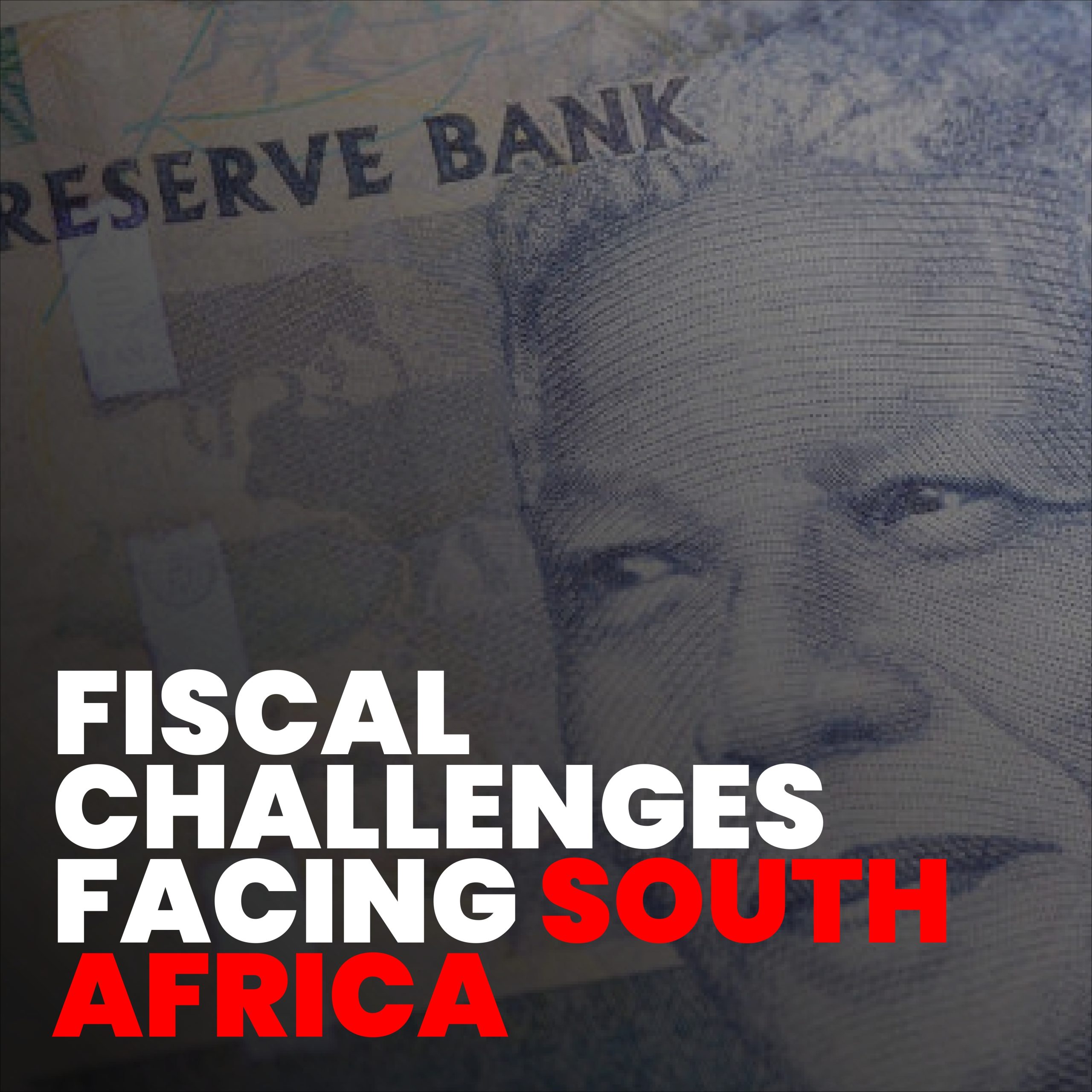
Introduction
The South Africa Deficit has emerged as a major focus after September 2025 data showed a shortfall of R15.36 billion (~US$887 million). This gap underscores ongoing challenges in balancing government expenditures with revenue collection. Policymakers must manage fiscal pressures while protecting essential services and maintaining investor confidence. The cancellation of the VAT increase earlier in 2025 widened the medium-term financing gap, requiring alternative revenue measures or tighter expenditure controls. Understanding the drivers behind this deficit is essential for investors, businesses, and households seeking to anticipate economic trends and assess potential risks. Fiscal management remains a key factor influencing currency stability, borrowing costs, and market sentiment.
South Africa Deficit: September Snapshot
The September deficit reflects the difference between government spending and revenue inflows. At R15.36 billion, or roughly US$887 million, the shortfall illustrates persistent fiscal pressures. Monthly deficits can fluctuate due to VAT refunds, tax collection timing, and transfer schedules. While one month’s deficit is not unusual, repeated shortfalls may indicate structural gaps. Investors and analysts monitor whether deficits are primarily driven by weak revenue collection or rigid expenditure. Persistent deficits can elevate borrowing needs, increase debt servicing costs, and reduce room for capital spending, making fiscal discipline and credible policy planning critical for economic stability.
South Africa Deficit: Revenue and Tax Challenges
Revenue collection remains central to fiscal performance. In 2025, the Treasury proposed a VAT hike to increase receipts, but political and economic considerations halted the measure. This left a medium-term revenue gap estimated at R75 billion. Revenue volatility stems from corporate earnings fluctuations, commodity price cycles, and slower economic growth. While improved GDP growth and tax administration help, they rarely close structural deficits immediately. Policymakers face a choice between revenue reforms that encourage growth or stricter expenditure control. Investors watch these developments closely, as the mix of policy measures directly affects economic stability and the government’s ability to reduce the deficit over time.
South Africa Deficit: Expenditure Pressures
Government spending is heavily weighted toward fixed costs, including public sector wages, social grants, and transfers to state-owned enterprises. This rigidity limits immediate fiscal adjustment. Social grants provide essential support to households but constrain short-term flexibility. Treasury emphasizes tighter control of current spending while maintaining critical services. SOE reform remains a long-term challenge, with potential bailout risks. Effective deficit management requires medium-term strategies, including controlling wage drift, improving procurement efficiency, and prioritizing infrastructure projects that enhance productivity. Markets monitor these actions to assess whether fiscal discipline can be maintained without undermining social stability.
South Africa Deficit: Debt Levels and Ratings
Deficits directly influence public debt trends. South Africa’s debt-to-GDP ratio has steadily increased and hovered around 77% in 2025. If fiscal consolidation is maintained, debt stabilization is expected in the high 70% range. Rating agencies, such as Fitch, project government debt around 78–80% of GDP through the mid-2020s, affirming the BB- rating with a stable outlook. Investors focus on long-term debt trends rather than single-month deficits. Achieving primary surpluses, maintaining manageable funding costs, and implementing predictable fiscal policies can lower borrowing costs and reduce risk premia. Without credible fiscal plans, continued deficits could heighten debt service obligations and constrain policy flexibility.
South Africa Deficit: Market and Currency Implications
Fiscal deficits have a direct impact on financial markets, influencing the rand, bond yields, and equities. Deficit announcements affect investor expectations for borrowing, foreign participation, and real yields. A credible consolidation path can strengthen the currency and flatten the yield curve, reducing interest costs. Conversely, fiscal uncertainty or weak discipline can trigger a weaker rand, higher yields, and capital outflows. Global factors, such as commodity price swings and interest rate changes, can amplify market volatility. Transparent communication from Treasury and disciplined borrowing plans are essential to maintain investor confidence, even when monthly deficit figures appear volatile.
South Africa Deficit: Monthly Versus Annual Perspectives
Monthly deficit figures provide a partial view of fiscal health. Seasonal tax receipts, VAT refunds, and social transfers create short-term fluctuations that may not reflect annual trends. Investors compare year-to-date performance with official full-year projections, such as the FY 2025/26 deficit target of approximately 4.8% of GDP. Deviations from targets prompt corrective measures, including spending adjustments, revised borrowing plans, or policy changes. Markets focus on medium-term trends rather than single-month anomalies. Persistent slippage across multiple months signals structural pressures and heightens the importance of credible fiscal management.
South Africa Deficit: Policy Choices After VAT U-Turn
The withdrawal of the proposed VAT increase forced policymakers to reconsider three levers: alternative tax measures, expenditure restraint, and reforms to boost economic growth. While households benefited from relief, the resulting revenue shortfall must be offset through improved compliance, base broadening, or selective excise adjustments. Spending efficiency can help, though deep cuts may create social strain or underinvestment. Long-term fiscal sustainability requires reforms that enhance growth, strengthen infrastructure, and encourage private sector participation. Investors evaluate whether medium-term strategies are credible, balanced, and capable of reducing the deficit without jeopardizing social or economic stability.
South Africa Deficit: Debt Management Outlook
Government debt management is closely linked to fiscal deficits. Issuance calendars, bond maturities, and the mix of fixed and inflation-linked debt influence funding costs. Wider-than-expected deficits necessitate additional issuance or reduced cash buffers, both closely monitored by investors. Rating agencies anticipate gradual deficit reduction if consolidation measures are maintained, though debt levels remain elevated. Transparent communication on gross financing needs, auctions, and buybacks minimizes market volatility. Domestic institutional investors anchor demand, while foreign participation depends on global conditions. A disciplined, rules-based approach paired with realistic macro assumptions supports fiscal stability and investor confidence.
South Africa Deficit: Growth and Reform Connections
Deficits are intertwined with broader economic performance. Slower growth reduces tax receipts while increasing social spending, widening fiscal gaps. Treasury officials emphasize that stabilizing debt must coexist with growth-enhancing reforms. Strategic investments in infrastructure, energy reliability, and private sector participation can increase productivity, boost revenues, and reduce reliance on temporary fiscal measures. Successful reforms create a positive feedback loop: deficits shrink without harsh fiscal cuts, debt stabilizes, and economic confidence rises. Conversely, failure to implement structural reforms risks overreliance on short-term measures, undermining credibility and investor trust.
South Africa Deficit: Impact on Households and Businesses
The deficit affects households through potential tax changes and service affordability. Businesses face impacts on borrowing costs, planning certainty, and investor confidence. Sustainable fiscal paths anchored in transparent budgeting and credible reforms reduce uncertainty, encouraging investment and economic stability. The September deficit highlights the need for balanced policies that protect essential spending while improving efficiency elsewhere. Missed targets or unclear communication can raise borrowing costs and weaken market confidence. Stakeholders must monitor monthly fiscal updates, policy changes, and rating commentary to anticipate risks and opportunities in the economy.
FAQs
Why does the South Africa Deficit vary monthly?
Short-term fluctuations occur due to timing of tax collections, refunds, and transfer payments.
Does the South Africa Deficit influence credit ratings?
Ratings consider debt trends, economic growth, and reforms, with deficits as a contributing factor.
What is the sustainable approach to reducing the South Africa Deficit?
Balanced measures of spending discipline, improved revenue collection, and growth-supporting reforms reduce the deficit over time.
Conclusion
The South Africa Deficit remains a key indicator of fiscal health. The September R15.36 billion shortfall reflects persistent structural pressures but is part of a larger fiscal picture. Sustainable management requires transparent budgeting, credible reforms, and disciplined policy execution. Balancing social priorities with efficiency and growth can stabilize debt, reduce borrowing costs, and maintain investor confidence. Monitoring monthly deficits in context, holding policymakers accountable, and assessing medium-term debt trends are critical for long-term economic stability and market trust.


